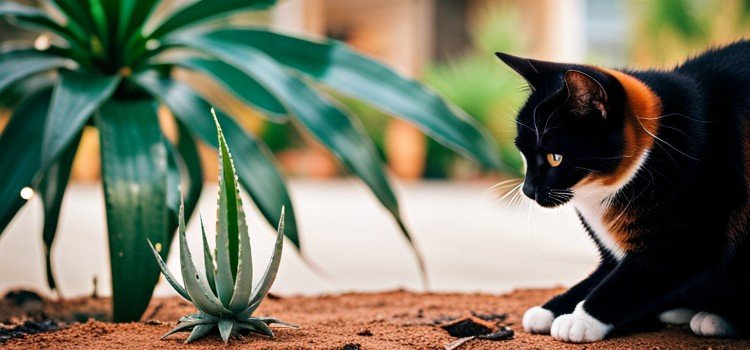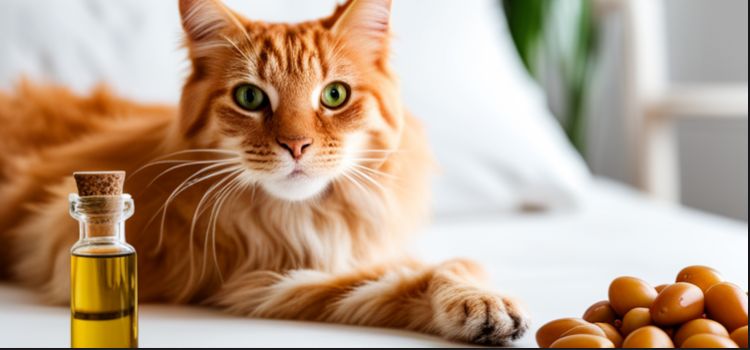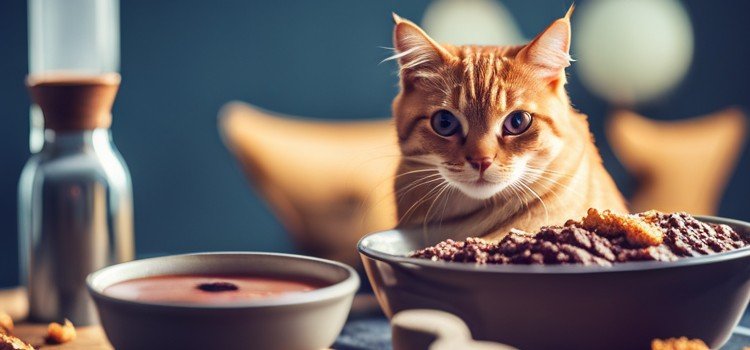As an Amazon Associate committed to the mission of improving the lives of our readers, Live-Clear.com receives a small commission from eligible purchases made through our affiliate links. This revenue enables us to keep producing insightful articles and other material.
Dogs roll around after eating to aid in digestion and to mark their territory with their scent. This behavior is instinctual and common in dogs of all breeds and sizes.
Rolling around on their food or litter area can also help to leave their scent and communicate to other animals that this is their space. However, if your dog is excessively rolling around after eating or showing other signs of discomfort, it may be a sign of a medical issue and a visit to the vet is recommended.
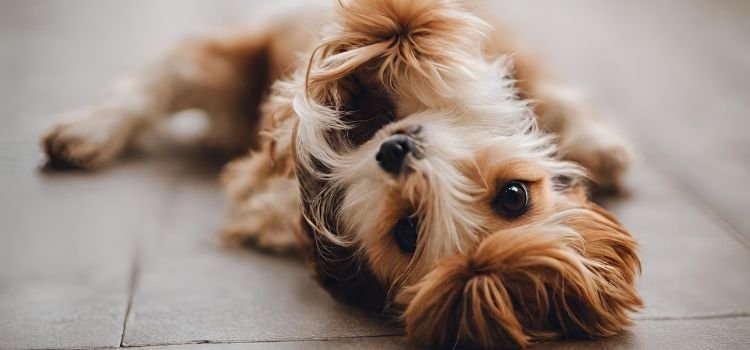
If you are a dog owner, you may have noticed that your furry friend sometimes has a strange behavior of rolling around after eating. It can be amusing to watch, but have you ever wondered why they do this? Is it a sign of a medical issue or is it just their way of marking their territory? We will explore the reasons behind this behavior and what it means for your furry friend. Understanding this can help you care for your pet and ensure they are healthy and happy. So, let’s dive in!
The Behavior
Dogs roll around after eating due to their early instinct to mask their scent from potential predators. This behavior also aids in digestion and stimulates blood flow.
After your furry friend finishes eating, have you ever noticed them rolling around on the ground? This behavior, known as rolling, can be quite puzzling for any dog owner. Some may wonder if this behavior is natural or if it signifies an underlying issue. In this section, we will explore the behavior of rolling after eating.
Definition Of Rolling
Rolling is a common behavior for dogs that involves them lying on their back and twisting their body. It is typically accompanied by squirming and rubbing their head or back against the ground. Dogs can roll on various surfaces, including grass, dirt, carpet, and concrete. Rolling after eating is just one of the numerous reasons why dogs roll, but it is the focus of this post.
Common Occurrence
Rolling after eating is a natural phenomenon that doesn’t require any concern. Dogs’ ancestry and instinct have made them do it. Rolling may make the dog feel better and easier after eating or just an act of comfort. Staying grounded is one of the reasons dogs roll after eating. It helps their stomach get rid of any remaining food, which prevents gas and bloating afterward.
Moreover, if there are any crumbs or leftover food on their face, dogs may roll around to clean off the remnants. This behavior is also related to dogs’ natural instincts from their ancestors that had to roll to cover their scent or cover up the food they had found.
So, rolling after eating is a common behavior among dogs, and it shouldn’t be a cause for concern. It’s just a natural instinct that can help your furry friend feel more comfortable and healthy.
Possible Explanations
Possible explanations for why your dog rolls around after eating include marking their territory, removing any food scent on their body, or simply enjoying the feeling. Rolling after a meal is a natural behavior for dogs and usually nothing to worry about.
After finishing their meal, many dogs will suddenly drop to the ground and roll around, almost as if they just found something delightful to wriggle in. Pet owners may find this behavior confusing, especially when it appears excessive or out of the ordinary. To demystify this eccentric habit, below are some possible explanations for why our canine friends feel compelled to “rub it in” after grubbing down on their food.
Instinctual Behavior
One idea is that dogs inherited this tendency from their wild ancestors, who would often “bury” uneaten leftovers in the dirt to camouflage their scent from competing predators. Rolling around in dirt or grass could potentially help a dog mask its smell after a meal, reducing the likelihood of becoming prey. Similarly, some dogs may have learned to “mark their territory” by rolling around in their food area, leaving behind their own scent and dissuading other dogs from attempting to eat from the same dish.
Medical Reasons
In some cases, excessive rolling around after a meal could indicate an underlying health issue. Dogs with sensitive stomachs may develop gastroenteritis symptoms such as nausea or stomach pain after eating, causing them to flop around on the ground. Additionally, certain skin conditions like allergies or infections can cause itchiness or discomfort, leading a dog to scratch and roll around more than usual. Pet owners should monitor their dog’s behavior and consult a veterinarian if they suspect something more serious may be at play.
Digestive Behavior
Finally, the explanation could be as straightforward as the fact that a dog’s digestive system is sensitive and prone to irritation. Rolling around could potentially ease symptoms of bloating or discomfort caused by ingesting too much too quickly. Alternatively, some dogs may simply enjoy the sensation of rubbing their full bellies against the ground, like a satisfying “food dance” of sorts.
Overall, there could be a variety of reasons as to why a dog may roll around after finishing a meal. Whether it’s an instinctual behavior, a medical concern, or simply a case of digestive bliss, it’s important for pet owners to understand their dog’s habits and monitor any changes in behavior.

Reasons For Instinctual Behavior
Have you ever wondered why your furry friend rolls on the ground after a meal? As it turns out, there are many reasons for dogs’ instinctual behaviors. In this section, we will explore some of the common reasons why dogs roll around after eating.
Historical Perspective
Rolling around on the ground after eating is a behavior that dates back to wolves, who often rolled in the scent of their prey after a successful hunt. This behavior allowed them to disguise their own scent, making them more difficult for their prey to track. Even though dogs today are domesticated and do not need to hunt for their food, the instinct to roll around in the scent remains.
Pack Mentality
Dogs have an innate sense of hierarchy and order within their packs. Rolling around after a meal can be a way for them to communicate their rank and status to other dogs. By rolling on the ground, they are depositing their scent and marking their territory, which can be a way of asserting dominance.
Marking Territory
Dogs have a highly developed sense of smell and use it to navigate their world. Rolling on the ground after eating may be a way for them to mark their territory and communicate with other dogs. By depositing their scent on the ground, they are letting other dogs know that they have eaten and are staking their claim to the area.
Overall, rolling around after eating is a normal behavior for dogs. It is important to remember that while it may seem strange to us, it is a natural and instinctual behavior for them.
Medical Reasons
After eating, dogs may roll around due to stomach discomfort, nausea, or indigestion. Some medical reasons include gastrointestinal issues, like parasites, food allergies, or an upset stomach caused by a sudden change in diet. It’s important to monitor your pet’s behavior to ensure their health and well-being.
Allergies
If your pooch rolls around after eating, allergies might be the culprit. Dogs can have allergic reactions to a variety of things, including their food, environment, and seasonal changes. An allergic reaction can cause your dog’s skin to become itchy, which may lead to him or her rolling around in an attempt to soothe the itch. Common food allergens include beef, chicken, dairy, and wheat. Environmental allergens may include pollen, dust mites, and mold. If you suspect that your dog has allergies, it’s best to consult with a vet to determine the root cause and appropriate treatment.
Stomach Issues
Another medical reason for your dog rolling around after eating is stomach issues. If your dog is suffering from some digestive upset, such as indigestion or acid reflux, they may roll around as a way to alleviate discomfort. This behavior could also be an indication of a more serious medical condition, such as pancreatitis, so it’s important to monitor your dog’s behavior and contact a vet if you suspect something more serious is happening.
Skin Irritants
Finally, skin irritants can cause your dog to roll around after eating. If your dog is exposed to toxins or irritants in the environment, it can cause skin irritation and itching. This can lead to your dog rolling around in an attempt to scratch the itch. Common skin irritants include flea bites, bug sprays, and other chemicals found in the environment.
It’s important to identify the irritant causing the problem and remove it from your dog’s environment to prevent further discomfort. A vet can also offer treatment options to help soothe the irritation and stop your dog’s rolling behavior.

Digestive Reasons
After eating, dogs may roll around due to digestive reasons such as discomfort from gas or bloating. Additionally, dogs may instinctively roll to aid in digestion as it stimulates the muscles and aids in food movement.
Indigestion
When your dog rolls around after eating, it could be an indicator of indigestion. Indigestion can be caused by a wide range of factors such as eating too quickly, or consuming inappropriate foods. Therefore, if your furry friend is consuming a lot of food too quickly, their stomach may struggle to digest everything.
Rolling around after eating can ease off the discomfort your pet feels due to indigestion. It may seem that your pet is just having a strange moment, but it is essential to take note of how often this happens and take the necessary precautions to prevent indigestion from happening in the first place.
Stomach Adjustment
After your dog eats a meal, their stomach will begin the process of breaking down the food for digestion. Rolling around after eating can actually help them to adjust the stomach’s fullness and redistribute the food contents within the stomach. Some dogs may roll around after eating to ensure that the enzymes, acid, and bile effectively break down the food, which makes it easier to digest. This process can consist of spike movements to attach the stomach sides to the internal organs, causing the food content to move, making the digestive process more efficient.
Environmental Factors
Dogs roll around after eating due to environmental factors. This behavior may be attributed to their survival instincts. Rolling on the ground helps them mask their scent from predators and protect their food from scavengers.
After your dog finishes a meal, it is not uncommon to see them roll around on the ground in what seems like pure bliss. This behavior can be attributed to several environmental factors that affect your dog. These factors include the tactile stimulation, pleasure-seeking, and response to smell.
Tactile Stimulation
One of the environmental factors that contribute to a dog rolling around after eating is tactile stimulation. This behavior can give your dog a pleasurable sensation that comes from the feeling of the ground on their fur. Dogs have many nerve endings in their skin that can be stimulated by the texture of the floor they are lying on, and this can cause them to roll around in excitement. This behavior can also be a sign of your dog trying to scratch an itch or get rid of any discomfort they may feel during digestion.
Pleasure Seeking
Dogs are social animals and are always seeking attention and love from their owners. This behavior can also be attributed to pleasure-seeking. Rolling around after eating can be perceived as a way for your dog to signal that they are happy and content. Dogs may roll around to get more attention and to show how satisfied they are after a meal. In some cases, rolling around can also be a sign of playfulness, and your dog might be inviting you to join them in their bliss.
Response To Smell
Dogs have a sense of smell that is much stronger than humans, and they use it to communicate with the world around them. The third factor that can contribute to dogs rolling around after eating is their response to smell. It is common for dogs to roll around if they are trying to mask their scent or convey a particular scent to other dogs. Moreover, dogs might roll on something that smells good to them to mark a particular territory or household item.
It’s natural for dogs to roll around after eating, and this behavior can be a sign of their happiness, pleasure, itchiness, and response to smell. As a dog owner, it’s essential to observe and understand your dog’s behavior as it helps you to have a better relationship with them.
Owner Relationship
The relationship between a dog and its owner is one of the most beautiful and remarkable things in the world. Nothing can compare to the bond that forms between a human and their furry companion. As a dog owner, understanding your dog’s behavior is essential. This knowledge will not only help you communicate with your dog better but also make your time together more enjoyable. One such behavior that may leave you wondering is why your dog rolls around after eating. Let’s explore how the owner relationship can impact this behavior.
Impact Of Affection
Dogs love attention and affection from their owners. After eating, your dog may roll around as a way of showing affection. It is their way of expressing their happiness and excitement for having a full stomach. Additionally, for some dogs, rolling on their back is a way of getting their owners to pet their belly. Dogs find belly rubs to be very rewarding, and they roll around to encourage their owners to give them one.
Dominance
Rolling around after eating can be a sign of your dog’s dominance. In a pack hierarchy, the dominant dogs are the first ones to eat, followed by the submissive dogs. Rolling around after eating indicates that your dog is taking on the behavior of a dominant dog. Your dog may also roll around as a way of claiming ownership of the area where they ate. However, if your dog growls or shows aggression after rolling around, it is a sign that they are trying to establish dominance over you. In such cases, you should consult a professional dog trainer.
Training
Training your dog can also have an impact on their behavior after eating. If your dog knows basic commands like “sit” and “stay,” you can use them after they finish their meal. Once your dog finishes eating, ask them to sit or stay, rewarding them with treats or praise. This will help your dog associate doing something positive after eating and reduce their desire to roll around. Consistent training can help your dog form good habits and improve their behavior over time.
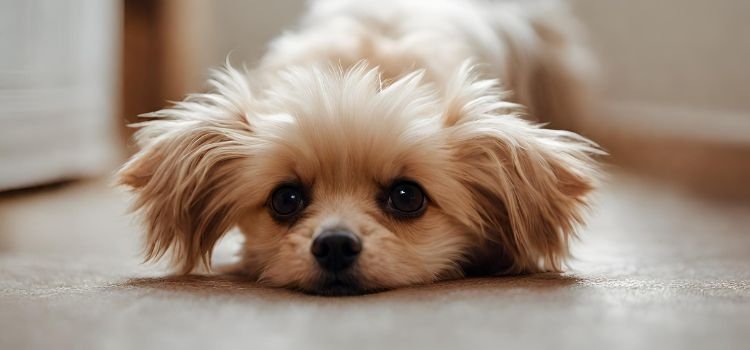
Conclusion
When dogs roll around after eating, it’s nothing to be too concerned about. It’s a natural behavior that dates back to their ancestors who would roll around to hide the smell of their food from predators. It could also be a way to aid digestion or simply their way of having fun.
However, if the behavior becomes excessive or accompanied by other concerning symptoms, it’s always best to consult a veterinarian. Remember, understanding your dog’s behavior is key to keeping them happy and healthy.
Frequently Asked Questions Of Why Does My Dog Roll Around After Eating
Dogs may roll over after eating to aid in digestion or to show submissiveness. Rolling exposes their belly to cool air, which can help with digestion, and also displays vulnerability as a way of showing they are not a threat.
Dogs rub their faces on the floor after eating as a means of cleaning any food residue off their face and getting rid of any lingering scents. They may also do it simply because it feels good. It’s a natural behavior that’s not usually a cause for concern.
Dogs roll around for no reason to alleviate boredom, redistribute skin oils, scratch an itch, clean themselves, mark their scent, and show excitement. Rolling is also a common social behavior and instinctual form of communication. However, if this behavior is excessive, it may indicate an underlying medical condition that requires veterinary attention.
Dogs wiggle after eating because it’s their natural way to aid digestion. The movement helps food settle comfortably in their stomach, preventing bloating and discomfort. It also helps them release energy and excitement, making them happy and relaxed.
Dogs roll around after eating to aid digestion and spread their scent. Rolling creates comfort and relaxation.
Amazon and the Amazon logo are trademarks of Amazon.com, Inc, or its affiliates.
